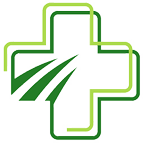Most people don’t read their medical records for fun. Lab reports are full of numbers and abbreviations. Imaging results are wrapped in technical language. Visit notes are long, rushed, and written for other clinicians—not for you.
Yet those same documents contain the story of your health.
The idea behind a “medical brief” is simple: turn long, complex medical paperwork into short, clear summaries you can actually use. When you learn how to do this for yourself and your family, every appointment becomes calmer, faster, and more productive.
Why Medical Information Feels Overwhelming
Modern healthcare generates a lot of data:
- Blood tests, imaging, and specialist reports
- Discharge summaries after hospital stays
- Medication changes and follow-up instructions
- Portal messages, phone call notes, and email threads
Individually, each piece is useful. Together, they can feel chaotic. Common problems include:
- Jargon everywhere. Terms like “hyperlipidemia,” “degenerative changes,” or “elevated fasting glucose” don’t explain themselves.
- Scattered documents. Some results are in email, others in a portal, others on paper. Nothing is in one place.
- No clear story. You see snapshots (one test at one time), not the overall trend or what it means for your future.
A good medical brief cuts through all of that.
What Is a Medical Brief?
Think of a medical brief as a one–two page, plain-language summary of a specific part of your health. It’s not a replacement for full records—it’s a front cover that makes the detailed documents easier to understand and use.
For example, you might create:
- A Blood Pressure Brief summarizing your diagnosis, medications, home readings, and key labs.
- A Diabetes or Blood Sugar Brief outlining A1c trends, medications, lifestyle changes, and complications (if any).
- A Joint & Spine Brief listing imaging results, physical therapy attempts, surgeries, and what helps or worsens your pain.
Each brief answers three basic questions:
- What is going on? (diagnoses, main problems, relevant history)
- What has been tried? (medications, therapies, surgeries, lifestyle changes)
- What’s the current plan and what worries you? (goals, questions, red flags)
This structure helps both you and your clinicians see the big picture quickly.
How to Build Your Own Medical Brief
You don’t need medical training to create a powerful summary. Start with one health issue at a time and follow this rough format.
1. Title and basics
- “High Blood Pressure – Summary” or “Knee Pain – Medical Brief”
- Your name and date of birth
- Date you last updated the document
2. Short description of the issue
Use simple language, for example:
“I was diagnosed with high blood pressure in 2021. It tends to run high in the clinic but is lower at home. I’ve tried two medications so far.”
3. Key test results and findings (big picture only)
Pick the essentials over the last few years:
- For blood pressure: a range of home readings and clinic averages
- For diabetes: A1c values and fasting glucose over time
- For joint issues: main findings from X-rays or MRIs, not the full report text
Instead of copying every number, highlight patterns:
“A1c values: 7.6 → 7.2 → 6.9 over 18 months (improving with diet changes and walking).”
4. Treatment history
List what you’ve tried and how it went:
- Medications (name, dose, approximate start/stop dates, side effects)
- Therapies (physical therapy, injections, counseling, diet changes, exercise programs)
- Surgeries or procedures related to the issue
Example:
“Tried Medication A (10 mg) for 6 months – blood pressure improved but caused cough, stopped. Currently on Medication B (5 mg), tolerating well.”
5. Current plan
Summarize what you and your doctor are doing now:
- Current medications and doses
- Recommended lifestyle changes
- Follow-up schedule (e.g., “review every 6 months” or “repeat scan next year”)
6. Your questions and concerns
This is where you write the things you want to ask at your next visit:
- “Can we reduce my medication if my home readings stay low?”
- “Is there anything more I can do to protect my joints?”
- “What signs mean this is getting worse and I should call sooner?”
This section keeps your priorities front and center.
Why Medical Briefs Make Appointments Better
Showing up with a clear brief changes the tone of the visit:
- Your doctor spends less time hunting for old records and more time explaining options.
- You don’t have to remember dates and doses from memory.
- You’re less likely to repeat tests just because nobody could find the old results.
- You can ask focused questions instead of trying to think of everything in the moment.
Clinicians are under time pressure too. When you bring them a concise, well-organized snapshot, you’re helping them help you.
Organizing the “Long Version” Behind Each Brief
A brief is powerful because it condenses information—but the full reports still matter. Behind each summary, you should keep the detailed documents it’s based on:
- Lab reports
- Imaging (X-ray, MRI, CT, ultrasound) summaries
- Visit notes from key doctors
- Hospital discharge summaries
- Physical therapy or rehabilitation programs
A simple folder structure on your computer or cloud storage works well:
- Health_Records/Heart
- Health_Records/Blood_Sugar
- Health_Records/Spine
- Health_Records/Mental_Health
Inside each folder, save relevant PDFs with clear names (for example, Echo_Report_2023-03-15.pdf or MRI_Lumbar_Spine_2022-11-01.pdf).
Using PDF Tools to Build Clean, Shareable Packets
Once you start collecting records, you’ll quickly see the value of grouping them. For example, before a cardiology visit, you might want one file that includes:
- Your medical brief for heart health
- The last few blood test results
- The most recent imaging report
- A short home blood pressure log
Instead of sending four separate files, you can combine them into a single, tidy document. A browser-based tool like pdfmigo.com lets you do this directly online: you can merge PDF lab results, scan reports, and your written summary into one easy-to-open file.
Later, if a clinic, insurer, or family member only needs a specific part of that packet—say, just the imaging pages or just the medication list—you can quickly split PDF files so you only share what’s relevant. That keeps your privacy protected and your communication precise.
Keeping Your Briefs Up to Date
A medical brief is a living document, not a one-time project. It’s most useful when it reflects your current reality.
Good times to update it:
- After major test results
- After starting or stopping a medication
- After a surgery or hospital stay
- When symptoms change significantly
- Before a big specialist appointment
You don’t need to rewrite everything. Just adjust the parts that changed: a new A1c value, a new scan report, a revised plan, or fresh questions.
Involving Family and Caregivers
Medical briefs are especially helpful when other people may need to speak for you or support your care:
- A partner who goes to appointments with you
- Adult children helping parents with complex conditions
- Trusted friends or relatives listed as emergency contacts
You can keep printed copies in a simple folder at home and digital versions in a shared, secure location. That way, if someone needs to step in during an emergency or hospital stay, they aren’t starting from zero—they have your health story in front of them.
Turning “Medical Brief” Into a Habit
You don’t have to summarize your entire medical history overnight. Start with the one issue that worries you most—blood pressure, blood sugar, pain, mood, breathing, whatever’s at the top of your mind.
Create a short, clear brief. Gather the most relevant reports behind it. Use simple tools and folders to keep everything accessible. Bring the brief to your next appointment and notice how different the conversation feels.
Bit by bit, you’ll build a small set of medical briefs that give you:
- A clear view of your own health
- More confidence in appointments
- Less confusion about treatments and tests
- Better communication with both professionals and family
That’s the power of turning “medical brief” from a website name into a personal skill: you stop being lost in paperwork and start being the informed, organized center of your own care.


